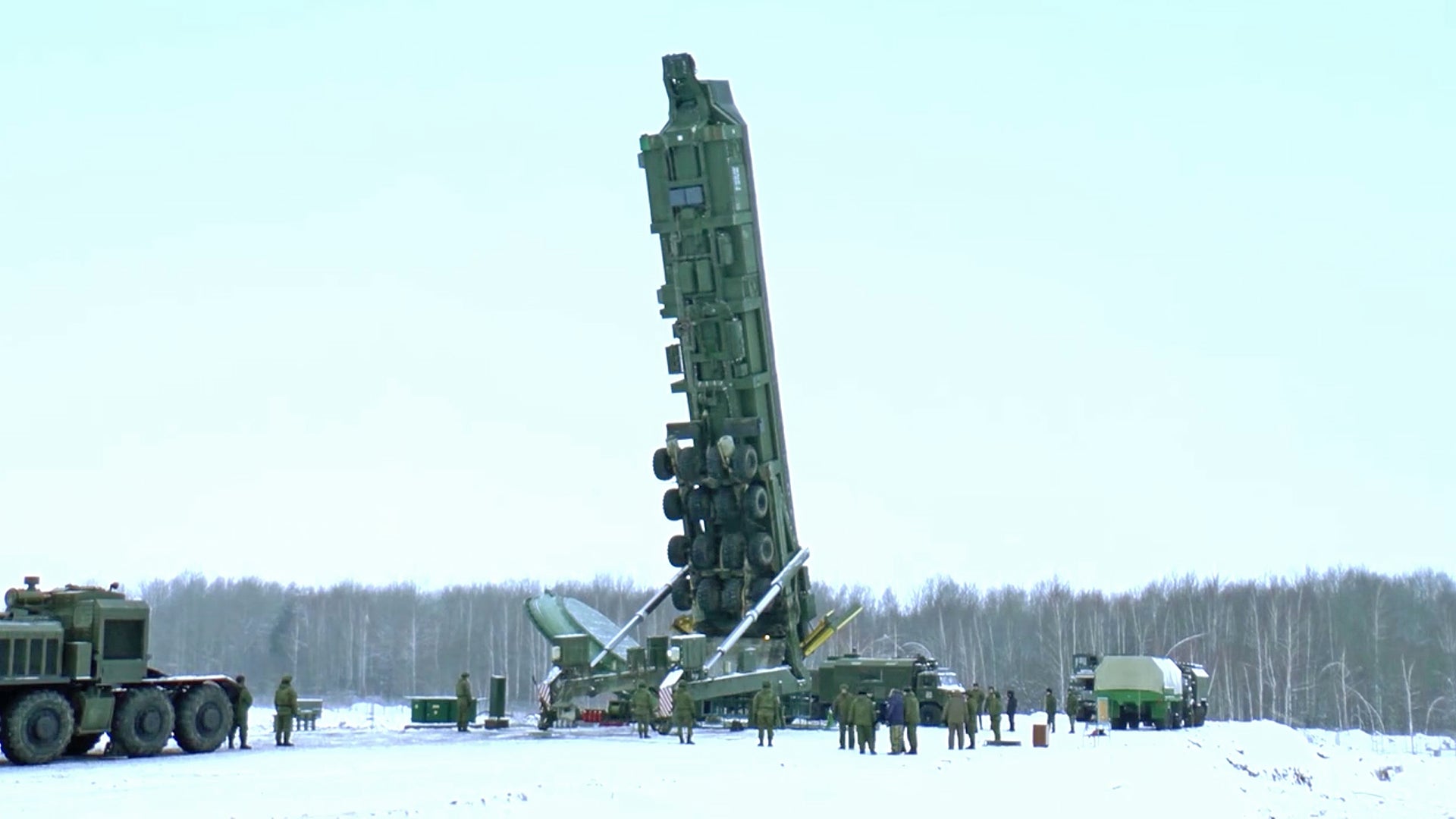Russia’s most advanced operational intercontinental ballistic missile (ICBM), the RS-24 Yars, is one massive harbinger of death and destruction. It weighs in just shy of 110,000 pounds, is 68.5 feet long, has four stages and can carry between six and ten (depending who you ask) independently targetable reentry vehicles, each sporting nuclear warheads ranging from 100 to 300 kilotons yields.
The RS-24 Yars, like its predecessor that it evolved from, the Topol-M, differs from America’s land-based ICBMs in that they are deployed as both road-mobile and silo-based nuclear deterrents. Soon the Yars will even be deployed on railcars. When the RS-24 is being shaken and battered around the Russian countryside it is mounted atop a Belarusian-built MZKT-79221 16×16 heavy high mobility chassis. And although the operating environment is far less demanding when the Yars is deployed inside a fortified underground silo, it still has to get in that silo, and in doing so it has to go from horizontal to vertical.
This feat occurs via a gargantuan trailer equipped with four rows of of knobby tires packed four across. The missile is transported in this trailer to the silo’s brim. Then, once the equally as brutish looking tractor pulls away, massive hydraulic rams push the ICBM into a vertical position. Once hanging in that position directly over the silo, the Yars is lowered down into its concrete cocoon.
The process is impressive in just how simple it actually looks even though it clearly is not. Also, Russia’s transporter-erector system looks far more robust than the one used to convey America’s Minuteman III ICBMs, although the Minuteman III is ten feet shorter and 30,000lbs lighter.
Watch the contraption in action here:
The truth is Russians are great at tipping up big complex and highly explosive things that are meant to be launched into or very near space. Whereas here in America we traditionally roll our rockets out to the launch pad in an upright position, Russia tends to wait till the launch pad to tilt their rockets up into the vertical position. Regardless of if this is an efficient practice or not, it makes for some awesome examples of mechanical engineering.
I mean check out what happens before every Soyuz launch:

Or even better, check out the hulking transporter-erector that was recycled from the N-1 program and reused for the Energia rocket:


Am I the only one who sees a Viagra commercial in all this somewhere?
Contact the author Tyler@thedrive.com
